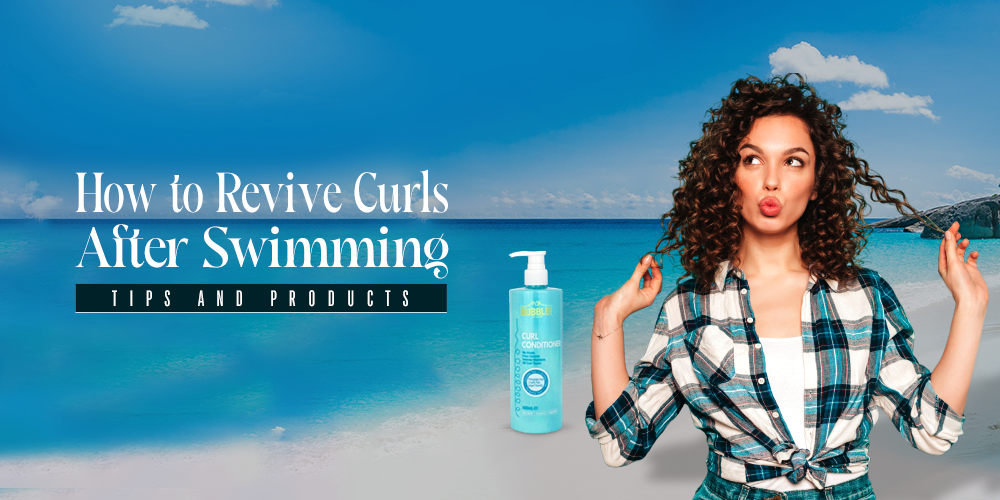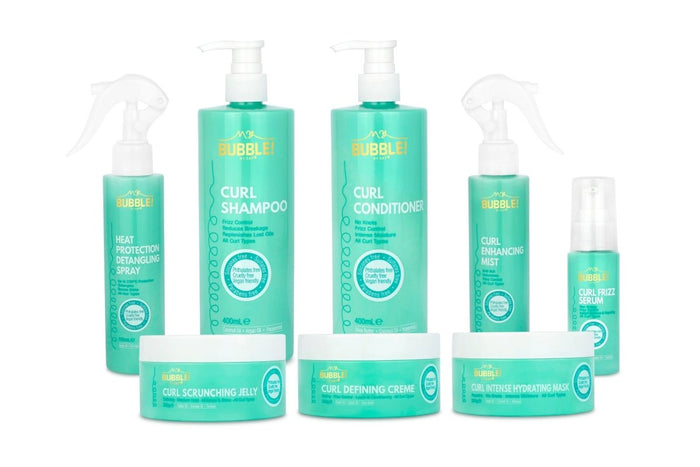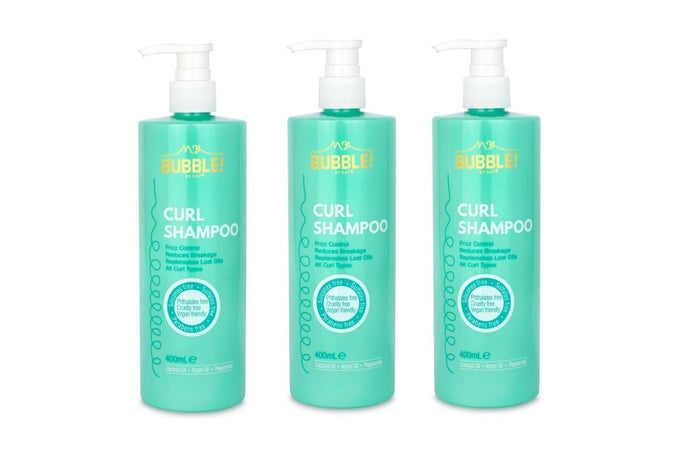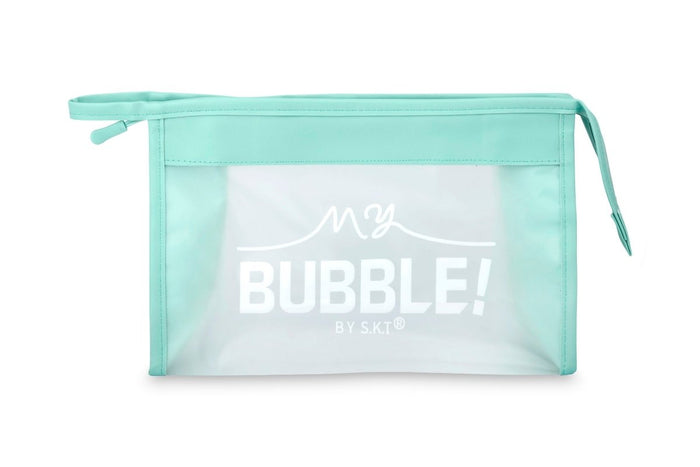
How to Revive Curls After Swimming – Tips and Products
Beautiful, healthy hair is a reflection of our overall well-being and personal style. For those blessed with naturally curly locks, maintaining that perfect curl pattern can be a bit challenging, especially after a refreshing swim. Chlorine, saltwater, and other chemicals present in pools or natural bodies of water can wreak havoc on curly hair, leaving it dry, frizzy, and tangled. Fear not, curly-haired comrades, as we unveil the secrets to revive your curls after taking a dip.
In this guide, we'll explore the importance of healthy hair, and the unique challenges faced by those with curly hair, and share valuable tips and product recommendations to keep your curls looking their best post-swim.
Common Problems for Curly Hair After Swimming
Dryness and Frizz
Curly hair tends to be naturally drier than straight hair because the natural oils produced by the scalp have a harder time reaching the ends of the curls. When exposed to chlorine or salt water, these oils are further stripped away, causing the hair to become excessively dry. This lack of moisture leads to frizz, as the cuticle layers of the hair open up in an attempt to absorb moisture from the air, resulting in a frizzy appearance.
Tangling and Knots
The unique structure of curly hair makes it more prone to tangling, and the combination of water, wind, and movement during swimming exacerbates this issue. As the curls clump together, especially when wet, they are more likely to form knots. Detangling becomes a challenging task, and improper handling can lead to breakage.
Color Fading
Curly hair is often more porous than straight hair, making it susceptible to color absorption and loss. Chlorine in pool water is a powerful chemical that can strip away the color molecules from the hair shaft, causing the color to fade over time. This is a significant concern for individuals with vibrant or recently dyed curls.
Weakness and Breakage
Wet hair is more elastic and prone to stretching, which can weaken the structure of the hair. Combine this with the stress of swimming, and the result is increased vulnerability to breakage. Curly hair, with its unique spiral shape, is more prone to breakage, split ends, and damage when exposed to harsh environmental factors like chlorine and salt.
Loss of Curl Definition:
Swimming can disrupt the natural curl pattern, causing curls to lose their definition and shape. The weight of water and exposure to chlorine can straighten the curls temporarily, making the hair appear less curly and more unruly.
Best Solutions for Revive Curls After Swimming
Rinse immediately after swimming
Rinsing your hair immediately after swimming is crucial to remove chlorine, salt, and other chemicals that can potentially damage your curls. The prompt rinsing helps prevent these substances from lingering on your hair, reducing the risk of dryness, frizz, and damage. Using a sulfate-free shampoo ensures a gentle yet effective cleansing without stripping your hair of its natural oils.
Co-wash or use a sulfate-free shampoo:

Sulfate-free shampoos are gentle alternatives to traditional shampoos. It involves using a conditioner to cleanse the hair, preserving natural oils while removing impurities. These methods are particularly suitable for curly hair, which tends to be drier, as they prevent excessive stripping of natural oils.
Deep conditioning
Deep conditioning is a vital step in the post-swimming hair care routine. It involves applying a rich, nourishing treatment that penetrates the hair shaft, replenishing moisture and nutrients. This helps combat the drying effects of chlorinated or salt water, leaving your curls hydrated, soft, and more manageable.
Leave-in conditioner:

Leave-in conditioners provide ongoing hydration and protection. They are designed to be applied to damp or dry hair and can help detangle curls, reduce frizz, and enhance curl definition. Leave-in conditioners often contain ingredients that form a protective layer on the hair, guarding against environmental stressors.
Detangling with a wide-tooth comb:
Detangling your hair with a wide-tooth comb is a gentle method that minimizes breakage. Start from the tips and work your way up to the roots, unraveling knots and tangles without causing undue stress on your curls. This process helps maintain the natural curl pattern and prevents damage.
Avoid heat styling:
Minimizing the use of heat styling tools is crucial for maintaining the health of your curls. Excessive heat can contribute to dryness, frizz, and damage. Embracing your natural curls and allowing them to air-dry or adopting heat-free styling methods promotes overall hair health.
Casual Protection Tips for Curls Hair
Casual protection for your hair involves adopting a more relaxed and natural approach to hair care, minimizing the use of harsh styling techniques and products with potentially harmful ingredients. Here are some tips for casual protection:
Avoid Excessive Styling
Limit the use of heat-styling tools such as flat irons, curling irons, and blow dryers. Excessive heat can damage the hair cuticle, leading to dryness and breakage.
Air-Dry Whenever Possible:
Allow your hair to air-dry instead of using heat-styling tools. This helps maintain your hair's natural moisture and prevents heat-related damage.
Use Toxin-Free Products:
Choose hair care products that are free from harmful chemicals, sulfates, and parabens. Look for products with natural ingredients that nourish and protect your hair.
Protective Hairstyles:
Consider protective hairstyles like braids, twists, or buns that can help minimize exposure to environmental factors and reduce mechanical damage.
Gentle Detangling:
Use a wide-tooth comb or your fingers to gently detangle wet hair. Wet hair is more prone to breakage, so be careful when handling it.
Conclusion
Reviving your curls after swimming is a manageable task with the right approach and products. By following these tips and incorporating suitable products into your routine, you can keep your curls looking vibrant and hydrated. For an effective and convenient solution, consider using the My Bubble Curl Detangling Set by YourBubble. This specially curated set is designed to nourish, detangle, and bring life back to your curls, ensuring they stay healthy and beautiful.
Remember, the key is to nourish and protect your curls, allowing them to shine in their natural beauty with the help of quality products like those offered by YourBubble.
FAQ
Q: Should I shampoo curly hair after swimming?
A: Yes, it's a good idea! After swimming, use a special shampoo for your curls. It helps remove a pool or ocean stuff from your hair, keeping your curls happy and clean.
Q: What can I put in my hair after swimming?
A: After swimming, use a leave-in conditioner or a special product for curls. Think of it like a treat for your hair, helping it stay soft and bouncy.
Q: How do I fix chlorine-damaged curls?
A: If chlorine makes your curls sad, try deep conditioning. It's like giving your curls a big drink of water. Use a special product that says "deep conditioner" to help them feel better.
Q: How do you protect your curls while swimming?
A: Imagine your curls wearing a superhero cape! Use a swim cap – it keeps your curls safe from pool or ocean water. You can also try hairstyles like braids or buns to keep your curls cozy and protected while you swim.



